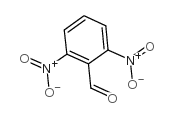Metabolism of 2,6-dinitrotoluene in male Wistar rat.
M Mori, T Kawajiri, M Sayama, Y Taniuchi, T Miyahara, H Kozuka
Index: Xenobiotica 19(7) , 731-41, (1989)
Full Text: HTML
Abstract
1. Unchanged 2,6-dinitrotoluene (2,6-DNT), 2-amino-6-nitrotoluene, 2,6-dinitrobenzyl alcohol, 2-amino-6-nitrobenzyl alcohol, conjugated 2,6-dinitrobenzyl alcohol and conjugated 2-amino-6-nitrobenzyl alcohol were detected in urine of male Wistar rats dosed with 2,6-DNT. The major metabolite was conjugated 2,6-dinitrobenzyl alcohol, which accounted for about 1.5% of the dose. 2. Unchanged 2,6-DNT, 2-amino-6-nitrotoluene, 2,6-dinitrobenzyl alcohol, and conjugates of 2,6-dinitrobenzyl alcohol, 2-amino-6-nitrotoluene and 2,6-dinitrobenzaldehyde were detected in the bile of rats dosed with 2,6-DNT. The major metabolite was conjugated 2,6-dinitrobenzyl alcohol, which accounted for 30% of the dose. Conjugates of 2,6-dinitrobenzyl alcohol (major) and 2,6-dinitrobenzaldehyde (minor) were common biliary metabolites in rats dosed with 2,6-dinitrobenzyl alcohol or 2,6-dinitrobenzaldehyde. 3. 2,6-Dinitrobenzyl alcohol and 2,6-dinitrobenzaldehyde were detected by incubating bile from rats given 2,6-DNT with rat intestinal contents under N2. 4. Incubation of 2,6-DNT with hepatic microsomal preparations gave 2,6-dinitrobenzyl alcohol. Incubation of 2,6-dinitrobenzyl alcohol with microsomal plus cytosol preparations gave 2,6-dinitrobenzaldehyde. Incubation of 2,6-dinitrobenzaldehyde with cytosol preparations gave 2,6-dinitrobenzyl alcohol and 2,6-dinitrobenzoic acid. The activities of 2,6-DNT oxidation to 2,6-dinitrobenzyl alcohol, 2,6-dinitrobenzyl alcohol oxidation to 2,6-dinitrobenzaldehyde, 2,6-dinitrobenzaldehyde oxidation to 2,6-dinitrobenzoic acid, and 2,6-dinitrobenzaldehyde reduction to 2,6-dinitrobenzyl alcohol were 22.0, 4.7, 1.3, and 23.3 nmol formed/g liver per min, respectively. 5. These results indicate that 2,6-dinitrobenzaldehyde, an intermediary metabolite of 2,6-DNT in male Wistar rats, is produced either by oxidation of 2,6-DNT in the liver, or by oxidation of 2,6-dinitrobenzyl alcohol formed by hydrolysis of 2,6-dinitrobenzyl alcohol conjugates excreted in the bile, and further indicate that enterohepatic circulation of 2,6-dinitrobenzyl alcohol and 2,6-dinitrobenzaldehyde occurs. This result, together with previous findings, shows that there are metabolic differences, including the biliary excretion of a diol glucuronide of 2,6-dinitrobenzaldehyde and the lack of urinary excretion of 2,6-dinitrobenzoic acid, between 2,4-DNT and 2,6-DNT in male Wistar rat.
Related Compounds
| Structure | Name/CAS No. | Molecular Formula | Articles |
|---|---|---|---|
 |
2,6-Dinitrobenzaldehyde
CAS:606-31-5 |
C7H4N2O5 |
|
Comparison of mutagenicity and theoretical reactivity of 2,4...
1990-01-01 [Mutat. Res. 243(1) , 47-52, (1990)] |
|
Nitroaromatic hydrocarbon ozonation in water. 2. Combined oz...
[Ind. Eng. Chem. Res. 37(1) , 32-40, (1998)] |
|
Synthesis and spectroscopic characterization of bis-pocket p...
[Inorg. Chem. 28(18) , 3421-3425, (1989)] |